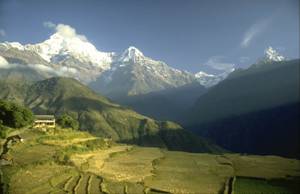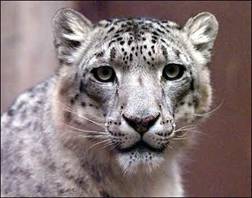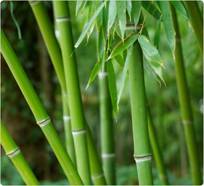Habitat of red panda:
The Red panda is found in many locations: the Himalayans in western china, temperate bamboo forests of the Sichuan and Yunnan provinces in China, in Myanmar and Nepal (1). They’re natural habitat are in mountains living at elevations between 4 900 – 13 000 feet (5). They prefer these heights because the weather is cool at that
|
 |
elevation, the air is moist, and the temperature is moderate since red panda's are very sensitive to heat, unable to handle temperatures over 25˚C (2). These locations have mixtures of deciduous and coniferous trees with thick bamboo growth, a perfect environment for red pandas.
Pressures put on habitat:
The red panda faces a lot of threats. One threat would be habitat fragmentation. For example, in Nepal, the red panda’s habitat face destruction because of five seven main reasons. One of the reasons is cash cropping. Cash cropping is cutting down land for agricultural purposes (3). Another threat is the demand for fodder and firewood. There has been an increasing demand for dairies which leads to supplies for fodder to increase. Malingo is the main source of fodder however malingo is also the main source of food for the red panda (3). The third reason is the demand for timber. Most, house materials are replaced by timber (3). Another reason is the over-harvesting of medical plants. The fifth reason is grazing, herders heavily over graze the fields destroying the red pandas ecosystem (3). Another reason is the erosion at the bottom of the mountainous regions the red panda’s thrive in. This erosion is caused by the terraces of maize crops (4). Another threat that faces the red panda is poaching. Due to their valuable bushy tail and fur, young pandas are killed by domestic and feral dogs or poached by poachers. Bamboo flowering is also a threat to them since bamboo flowering happens when a large amount of bamboo die which will greatly affect the red pandas. In a red panda’s diet, the bamboo is a large part of their diet and need huge amounts of it since only ¼ of the bamboo’s nutrients are actually taken.
 |
Natural Predators:
The main natural predator of the red panda is the snow leopard. The yellow-necked martens are only a threat towards red panda cubs (6).
|
Feeding habits
The red panda’s diet consists of bamboo, berries, bird eggs, insects, small birds and mice (6). The red panda mostly eat young tender bamboo and bamboo leaves. The red panda must eat an abundance of bamboo because their digestive systems weren’t built to extract the nutrients from plant matter. The red panda only suck up 25% of the nutrients from a bamboo. This leads the food supply to go through the red panda’s digestive system very quickly allowing them to lose weight very fast, red panda’s can lose up to 15% during the winter. However, the red panda’s have very strong molars and teeth helping them eat more efficiently. |
 |
Also, they find ways to prevent their metabolism rate from increasing by resting as much as they can when they don’t eat. Another way is to conserve heat by covering their body with their bushy tail. They chew the bamboo very thoroughly. They use their forearm grabbing the bamboo with their hand and radial sesmoid bone, which is used as a thumb, to eat (7). The red panda would spend a lot of time to find so much food to sustain its body; the red panda would spend up to 13 hours searching for food. The red panda would eat berries, bird eggs, insects, small birds and mice occasionally in the growing season of their habitat.
Impact of Climate Change
The impact of Climate Change has the potential to completely obliterate the red panda population. As climate change occurs many damaging events, such as bamboo flowering, could destroy many places of the red panda’s way of life. This is very harmful to the red pandas because they have a terrible digestive system making them very picky eaters and as the selected few food sources are gone, they will starve and eventually die. Not only that, the red panda has a slow paced life cycle since they have to prevent their metabolism from increasing which makes it even harder for red pandas to recover from damages to their population. In addition, their birth potential isn’t high, their litter is only 1- 4. Furthermore, as the climate changes so does the temperature making it lower than what the red panda can withstand or making it hotter than what the red panda can withstand (2). Also, the red panda is very sensitive to heat (2).
(1) (http://nationalzoo.si.edu/Animals/AsiaTrail/RedPanda/factsheet.cfm)
(2) (http://lil-georgies-blog4.blogspot.com/)
(3) (http://www.redpandanetwork.org/redpanda/threats.php)
(4) (http://au.encarta.msn.com/sidebar_781566168/red_panda.html)
(5) (http://www.redpandanetwork.org/redpanda/habitat.php)
(6) (http://www.sch.im/wlp/pages/red%20panda%202.htm)
(7) (http://www.buzzle.com/articles/red-panda.html)
(8) (http://www.redpandanetwork.org/redpanda/food.php)
|





